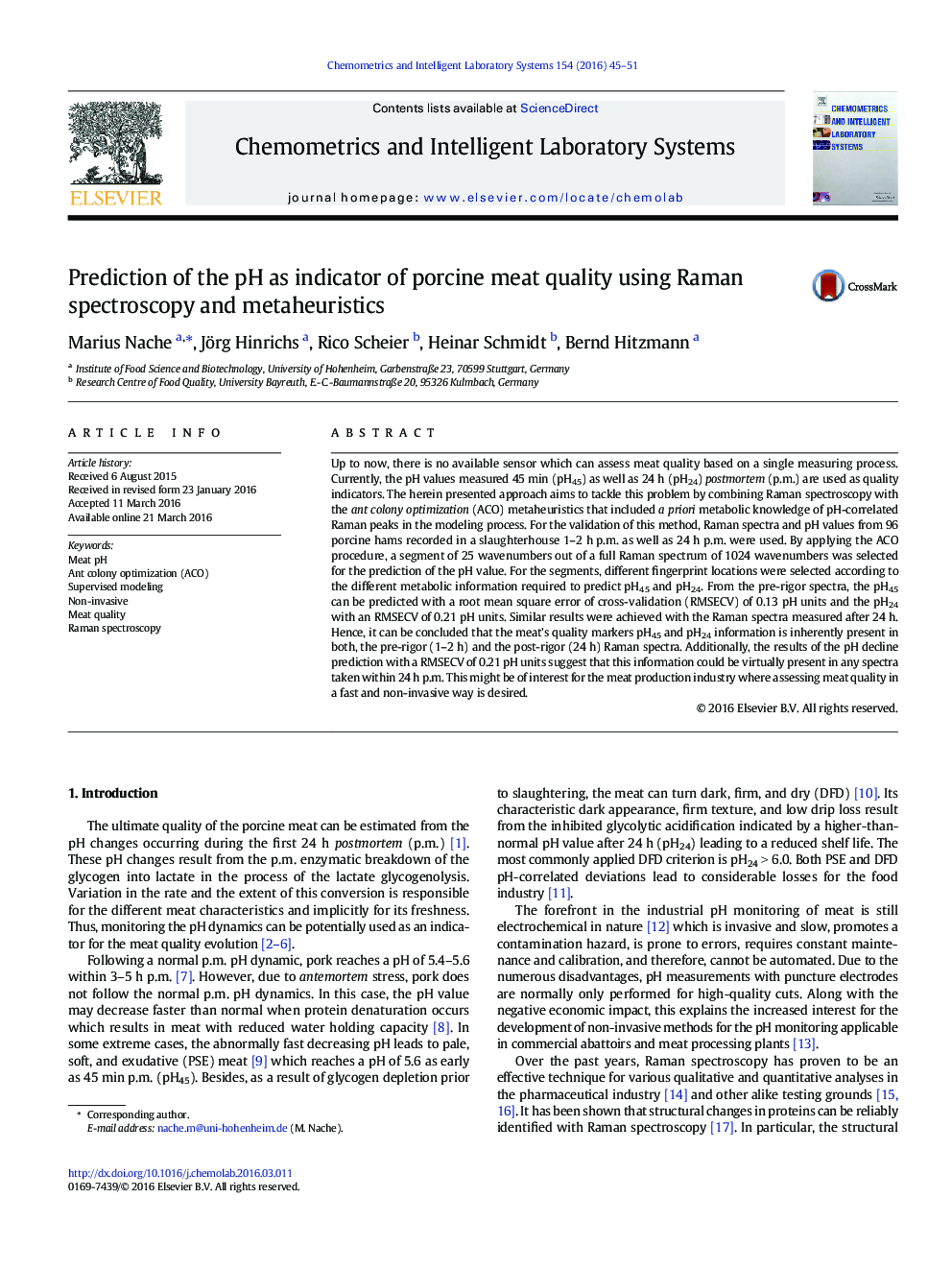| کد مقاله | کد نشریه | سال انتشار | مقاله انگلیسی | نسخه تمام متن |
|---|---|---|---|---|
| 1180310 | 1491525 | 2016 | 7 صفحه PDF | دانلود رایگان |

• Raman spectroscopy is used to predict pH as a marker for porcine meat quality.
• A priori knowledge of pH Raman fingerprints have been included in the modeling.
• Spectral fingerprint localization differs for all the pH markers prediction cases.
• pH evolution information is encoded in virtually any spectra taken within 24 h postmortem.
Up to now, there is no available sensor which can assess meat quality based on a single measuring process. Currently, the pH values measured 45 min (pH45) as well as 24 h (pH24) postmortem (p.m.) are used as quality indicators. The herein presented approach aims to tackle this problem by combining Raman spectroscopy with the ant colony optimization (ACO) metaheuristics that included a priori metabolic knowledge of pH-correlated Raman peaks in the modeling process. For the validation of this method, Raman spectra and pH values from 96 porcine hams recorded in a slaughterhouse 1–2 h p.m. as well as 24 h p.m. were used. By applying the ACO procedure, a segment of 25 wavenumbers out of a full Raman spectrum of 1024 wavenumbers was selected for the prediction of the pH value. For the segments, different fingerprint locations were selected according to the different metabolic information required to predict pH45 and pH24. From the pre-rigor spectra, the pH45 can be predicted with a root mean square error of cross-validation (RMSECV) of 0.13 pH units and the pH24 with an RMSECV of 0.21 pH units. Similar results were achieved with the Raman spectra measured after 24 h. Hence, it can be concluded that the meat's quality markers pH45 and pH24 information is inherently present in both, the pre-rigor (1–2 h) and the post-rigor (24 h) Raman spectra. Additionally, the results of the pH decline prediction with a RMSECV of 0.21 pH units suggest that this information could be virtually present in any spectra taken within 24 h p.m. This might be of interest for the meat production industry where assessing meat quality in a fast and non-invasive way is desired.
Journal: Chemometrics and Intelligent Laboratory Systems - Volume 154, 15 May 2016, Pages 45–51